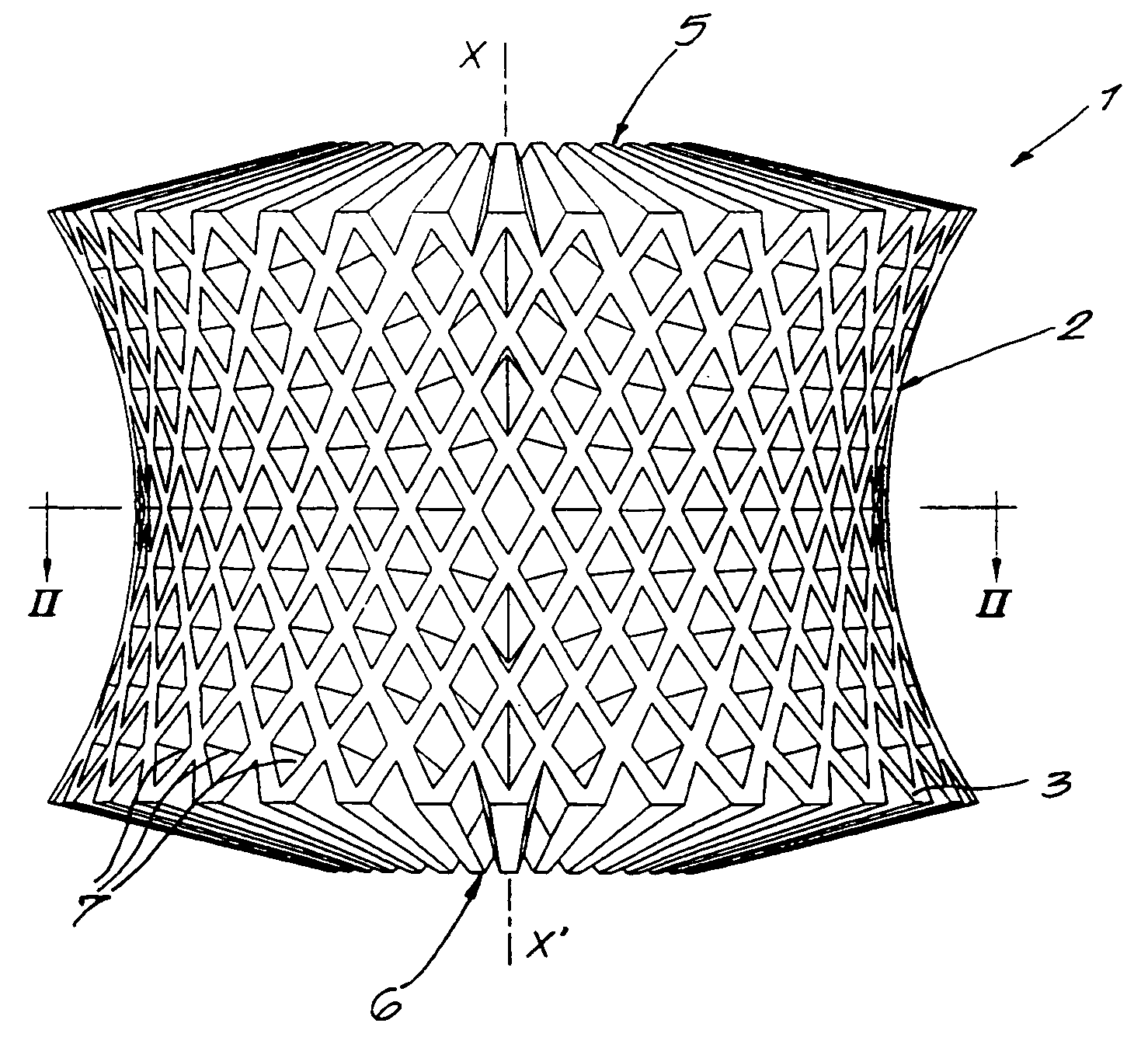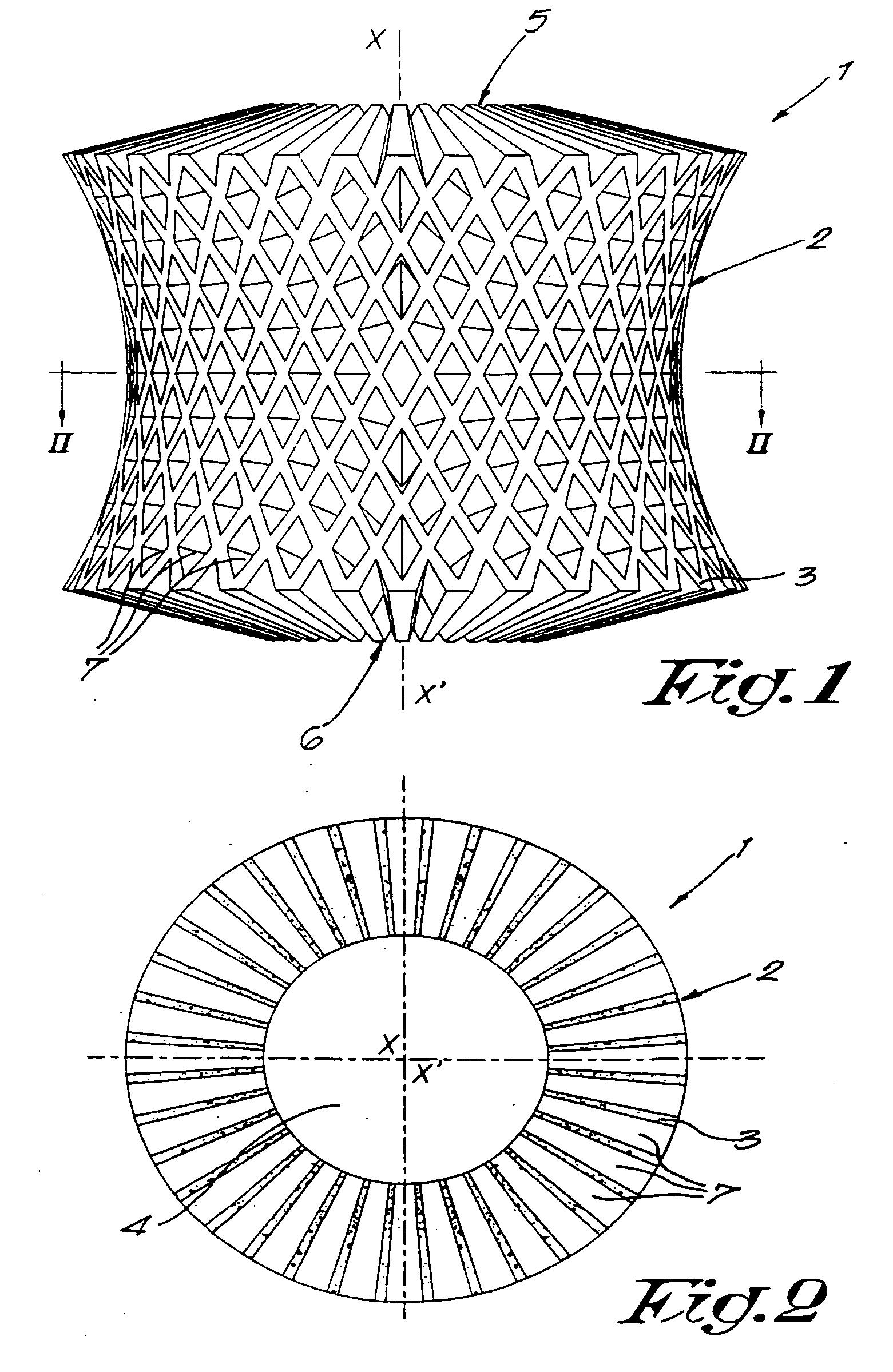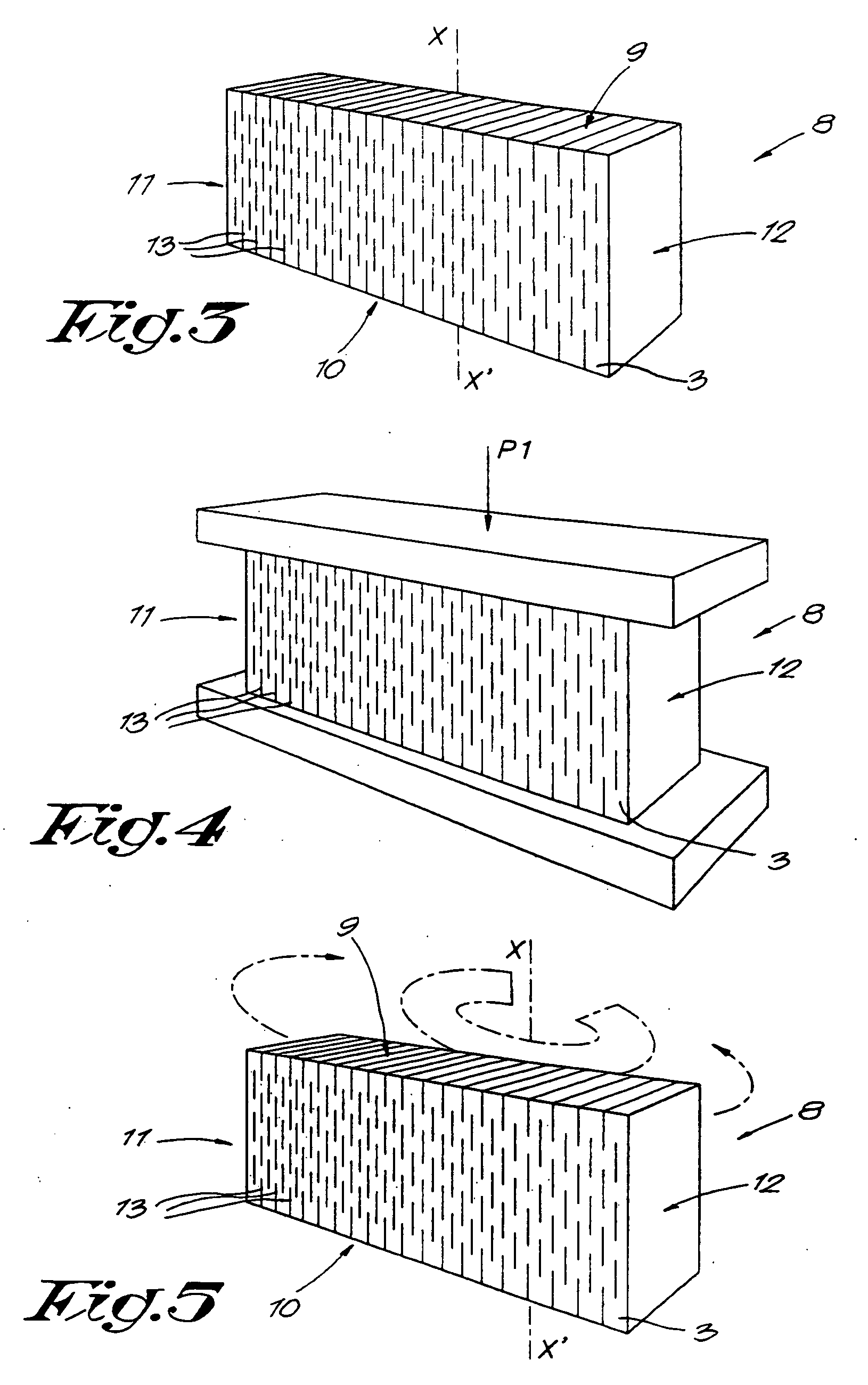Method for manufacturing a resilient body which can be applied in cushions, mattresses or the like
a technology of resilient body and manufacturing method, which is applied in the field of manufacturing resilient body, can solve the problems of relatively quick loss of resilience foam and the loss of functionality of resilient body, and achieve the effect of improving user comfort and improving air circulation
- Summary
- Abstract
- Description
- Claims
- Application Information
AI Technical Summary
Benefits of technology
Problems solved by technology
Method used
Image
Examples
Embodiment Construction
[0019]FIGS. 1 and 2 represent a resilient body 1 aimed according to the method of the invention.
[0020] This resilient body 1 is mainly made tubular with an imaginary X-X′ axis, and it is made of a layer 2 of a viscoelastic foam 3 according to the invention, limiting a central space 4, which space 4 extends as of one far end 5 of the body 1 to the other far end 6.
[0021] The outside of the one far end 5 towards the other far end 6 is preferably biconical, or almost biconical, by which is meant that the addendum line of the body 1 decreases as of both far ends 5-6 up to halfway the middle of both far ends 5-6.
[0022] The surfaces on both far ends 5-6 of the body 1 are preferably somewhat conical on the outside, which promotes the resilience of the body 1.
[0023] As represented in FIG. 2, the body 1, seen as a cross section, is preferably circular, whereby the central space 4 is in this case made cylindrical.
[0024] In the body 1 are provided cavities 7 which are radially directed fro...
PUM
| Property | Measurement | Unit |
|---|---|---|
| resilient | aaaaa | aaaaa |
| viscoelastic | aaaaa | aaaaa |
| shape | aaaaa | aaaaa |
Abstract
Description
Claims
Application Information
 Login to View More
Login to View More - R&D
- Intellectual Property
- Life Sciences
- Materials
- Tech Scout
- Unparalleled Data Quality
- Higher Quality Content
- 60% Fewer Hallucinations
Browse by: Latest US Patents, China's latest patents, Technical Efficacy Thesaurus, Application Domain, Technology Topic, Popular Technical Reports.
© 2025 PatSnap. All rights reserved.Legal|Privacy policy|Modern Slavery Act Transparency Statement|Sitemap|About US| Contact US: help@patsnap.com



